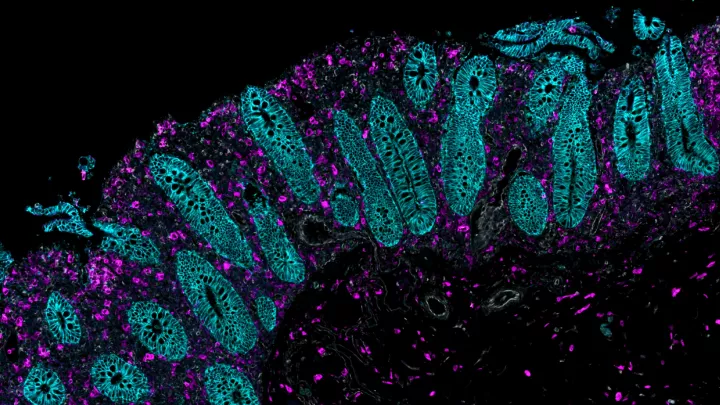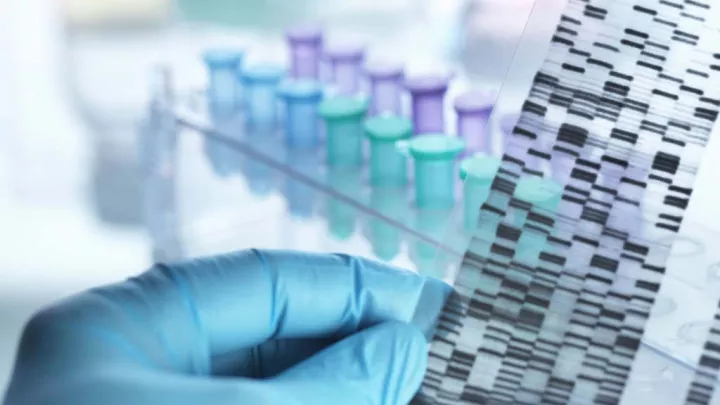Flow Cytometry Core Sorting Tips and Resources
Sorting Workflow
- Prior to scheduling your appointment, please check with the Flow Cytometry Core staff to confirm that the target fluorochromes in your experiment can be detected by the instruments offered by the core.
- Discuss with the sort operator to decide what settings you will use including: nozzle size, collection receptacle, sort temperature.
- Schedule your appointment in advance and specify the amount of time you will need.
- If you are running late, please notify a member of the Flow Cytometry Core as soon as possible.
- If you do not notify the operator, your appointment is subject to cancellation and you will be charged late fees.
- Continual tardiness may result in your core privileges being revoked.
On The Day of Your Sort Appointment
- Filter your samples using round bottom tubes containing a strainer (Cat#352235) prior to bringing the samples to the lab. Your samples should include the following:
- An unstained sample (highly recommended if possible)
- Your stained samples
- Any compensation controls if your sample is stained for more than one color. Compensation controls are single color controls that are only stained with one fluorochrome. (If your experiment involved only one fluorochrome + DAPI, this should not require compensation)
- Bring sterile collection tubes with media already aliquoted inside. The number of tubes will depend on the number of populations you plan to collect. For example, if you want both the negative and positive populations for a GFP+ transduced sample, you will need two tubes for this single sample.
- Stay with the operator to discuss the gating and selection of sort populations.
- The operator will proceed with the sort. You may stay with the operator or return after the sort is completed.
- The sort operator will return the sorted samples to you. We recommend you perform one wash (with PBS or cell culture media) to remove any sheath buffer from the cells.
Files Provided After Sort
- Batch analysis report: A PDF file displaying the gating and plots for the sort
- Sort report: A PDF file showing the number of cells that were sorted and which gate was used to sort
- Experiment file with FCS files: These files are your raw data. The XML experiment file can only be opened in FACS Diva and will include your gating strategy
- Labeled FCS files: These FCS files can be used with third-party software such as FlowJo or FCS Express for further analysis.
- Statistics report (by request): If you need a statistical report, please specify with the sort operator during your appointment so a report can be generated containing your parameters of interest (geo mean, median fluorescence intensity, mean fluorescence intensity, CV%, std dev, etc)
Additional Information
The following information is provided so that you can make the best use of your appointment time:
Planning Your Sort Experiment
- Nozzle and Collection Receptacle
This setting can differ depending on the nozzle size and the number of cells you are expecting back. Always bring extra collection tubes. The general rule of thumb is that your nozzle size should be about 4-5 times larger than the size of the cells being interrogated.
The following recommendations are based on a 70 µm nozzle setting:
- 1.5 microcentrifuge tube (+ 300µL collection media) = ~500,000 cells
- 5 ml round bottom tube (+ 1 mL collection media) = ~2.8 million cells
- 15 ml polypropylene tube (+ 1 mL collection media) = 10 million cells
The following recommendations are based on a 100 µm nozzle setting:
- 1.5 microcentrifuge tube (+ 300µL collection media) = ~300,000 cells
- 5 ml round bottom tube (+ 1 mL collection media) = ~1 million cells
- 5 ml round bottom tube (+ 2 mL collection media) = ~800,000 cells
- Sample Concentration
Having too diluted cells will lengthen the amount of time need for sorting. For your benefit, you should aim for the limiting factor to be the number of cells rather than the flow rate. Bring extra buffer to dilute your cells, if necessary.
As a reference, cell line concentration can be between 5-10 million cells per ml using the 100 um nozzle. If you have very few cells, please have the sample in a volume of at least 300 µL. - Sample Buffer
We generally recommend having your cells diluted in 2% FBS or 2% BSA. Higher concentrations of serum may cause your sample to become very viscous and clog the instrument. When possible, the buffer should not contain any phenol red as any dye in the medium can generate auto fluorescence. - Collection Buffer
As cells are very fragile after sorting, the collection media used can affect the viability of your cells greatly. The media should be buffered with a non-CO2 based buffer (e.g. HEPES) to maintain pH. The media should contain serum or BSA at an initially high concentration (e.g. 10 - 50%) that will get diluted as the tube fills with sorted cells. We often recommend to use 100% FBS for very fragile cells.
Recommended Consumables for Samples
- Sterile uncapped polystyrene round bottom tubes (Falcon, Cat#352052)
You can use these for analysis without sorting. They don't come with caps and they are the cheapest options. - Sterile capped polystyrene round bottom tubes (Falcon, Cat#352054)
Oftentimes people will use these tubes to collect the sorted population or for sort samples that they don't want to filter. We always recommend to filter your samples, but if there are very few cells or the cells are very small and don't tend to clump, it is fine to use these tubes. - Sterile polystyrene round bottom tubes with cell strainer (Falcon, Cat#352235)
We always recommend using tubes with cell strainers for sorting to make sure that the cells are in a single cell suspension and do not clog the instrument. This is especially important for cells that tend to clump (adherent cells, sticky primary cells, etc).
Other Sorting Tips
- Cells must be in single cell suspension. Clumping of the cells can lead to clogging the instrument, which can cause the stream to spray and endanger the purity of your sorted samples. Do not leave your cells in a pellet for prolonged periods of time and keep the cells on ice (or at the best temperature determined for your cell type).
- Controls are your best friend. You should always bring an unstained negative control (preferably of the same cell type as those being sorted). Your positive controls should be at least 20% positive (preferably 50%) and at least as bright if not more than the actual samples being sorted so that an accurate compensation matrix can be calculated. They should also be limited to one fluorescent protein per control tube.
Helpful Links and Resources
Flow Cytometry Instrument Configurations
Analyzers, and Cell Sorters Instrument Configurations
Current Protocols in Cytometry(Published in affiliation with ISAC)
A comprehensive source for protocols and review articles focused on the detection and analysis of various cellular populations, including instrumentation, data processing and analysis, cell and molecular imaging, and more.
FPbase
A free and open-source, community-editable database for fluorescent proteins (FPs) and their properties. Each protein in the database has a dedicated page showing amino acid sequence, accession IDs (e.g. GenBank, UniProt), evolution lineages and mutations, fluorescence attributes, structural data, references that introduced or characterized the protein, and more.
ISAC Biosafety Standards
The ISAC Biosafety Committee was established with the goal of providing guidance to its membership and the scientific community on safety issues related to cytometry, in particular cell sorting. The committee has been active in the creation of biosafety guidelines and standards for cell sorting and updated the Standards in 2014.
Optimized Multicolor Immunofluorescence Panel (OMIP) Collection
A special peer-reviewed Cytometry Part A publication type that reports on newly designed and optimized multicolor panels for flow cytometry, fluorescence microscopy, image cytometry, and other polychromatic fluorescence-based methods.

